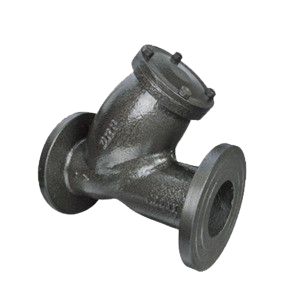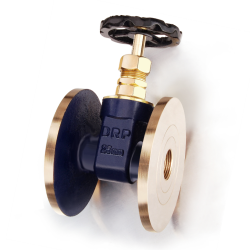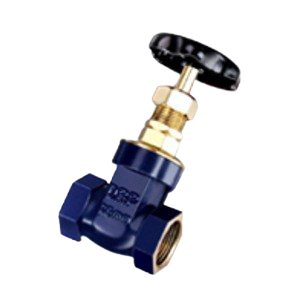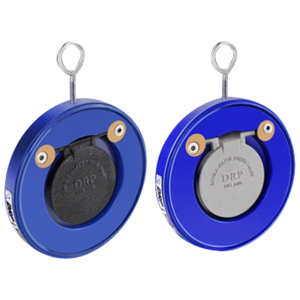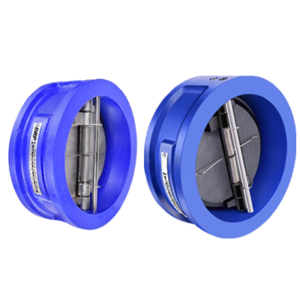CAST IRON Y TYPE STRAINER DRP®
-
DRP (DRP Metal Works / DRP Group) is a well-known Indian manufacturer of valves, pipe fittings, cast iron, cast steel, stainless steel etc. DRP Group+2DRP Group+2
-
Their quality policy is ISO-9001:2015.
| Parameter | Likely Values / DRP Range / What to Confirm |
|---|---|
| Body Material | Cast Iron, probably IS 210 Grade FG 200 (a common cast iron grade in India) or equivalent. |
| Cover / Bonnet / Screen Retainer | Cast Iron, bolted or screwed cover; screen likely stainless steel (SS-304) perforated sheet or mesh. |
| Screen Material | SS 304 perforated plate / mesh; perforation size maybe ~3 mm or finer depending on model. |
| End Connections | Could be flanged (common if larger sizes), or screwed / BSP / NPT for smaller sizes. |
| Size (Nominal Diameter) | Likely range from about ½-inch to large sizes (e.g. DN 300 or more) in flanged types; smaller in screwed types. |
| Pressure Rating | Probably around PN 10, PN 16, or pressure class equivalent (in kgf/cm²) = ~10-16 kg/cm²; for cast iron, above that is less common. |
| Temperature Range | Ambient / water / steam service at moderate temperature; maybe up to ~200-220 °C maximum, depending on gasket / screen, etc. |
| Testing | Hydrostatic test of body / shell; some differential pressure test; quality assurance under ISO-9001. |
| Finish / Coating | Usually natural cast iron finish; possibly painted, or with some anti-corrosive treatment; drain plug provided. |
| Gasket / Seal | Gasket material (if flanged or bonnet cover) likely according to IS standard (e.g. steam jointing sheet / compressed asbestos-free gasket / rubber depending on application). |
Uses / Applications
These kinds of cast iron Y-type strainers are generally used to:
-
Protect downstream equipment such as pumps, valves, meters, steam traps, control valves, heat exchangers from particulate solids (scale, rust, weld spatter, debris).
-
For water lines, cooling water, non‐corrosive fluids, steam lines of moderate temperature, perhaps oil service if lubricated and non-aggressive.
-
Industrial / municipal / plumbing / HVAC systems.
Pros & Cons (for Cast Iron Y-Type, DRP / in general)
Here are likely advantages and drawbacks of a DRP cast iron Y-type strainer:
Pros:
-
Cost effective — cast iron is relatively inexpensive compared to steel or exotic alloys.
-
Good durability under moderate service conditions.
-
Adequate strength for many standard water / steam / general industrial fluids (within its temperature / pressure limits).
-
Easy maintenance — Y-type design allows removal of screen, cleaning, sometimes without full shut down depending on layout.
-
Wide availability — parts, repair, screen replacement likely easier in domestic market.
Cons:
-
Limited pressure & temperature — cast iron becomes brittle at higher temperatures; has lower tensile strength than steel; risk of cracking under thermal shock or under high pressure.
-
Corrosion — cast iron can corrode; if fluid is aggressive (acidic, salty, etc.), or in moist ambient, corrosion could shorten life. Protection (painting, coatings) helps but adds cost.
-
Weight — cast iron items are heavier; handling, installation more laborious.
-
Brittleness — more sensitive to shock loading or sudden thermal changes.
-
Maintenance access — bonnet / cover clearance needed; draining etc.
What to Check to Get the Exact DRP Spec
If you need the actual DRP Cast Iron Y-Type Strainer spec, check or ask for:
-
DRP catalog / data sheet for Y-type strainers (cast iron body).
-
The size range and end connection types they offer (flanged vs screwed).
-
Pressure rating (PN / kg/cm² / psi) for each size.
-
Material standard for body, screen, gasket.
-
Maximum working temperature.
-
Perforation or mesh size of screen.
-
Test pressures (hydrostatic / shell).
-
Drain plug (yes/no) and orientation (Y-angle).
